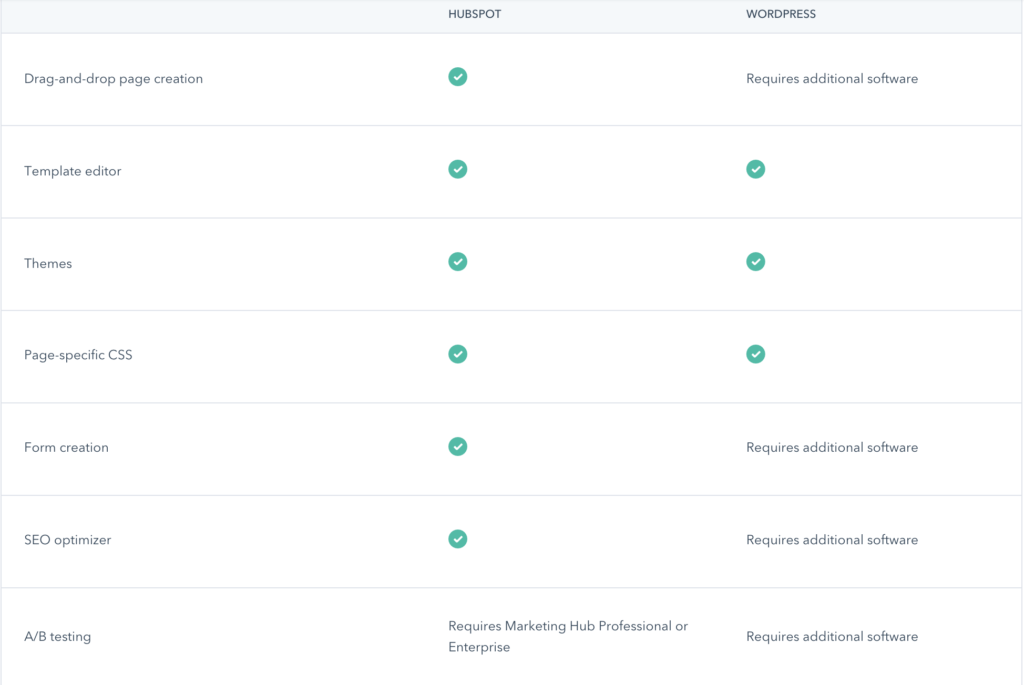Updated October 2023
An SEO study from Backlinko analyzed 1 million Google search results to determine that website pages with a faster loading speed rank higher in the SERPs (search engine result pages).
This is just one of many technical SEO tactics you should be monitoring on your website.
In this blog post, learn how HubSpot CMS's built-in technical SEO can increase your website's performance, help you rank higher on Google and ultimately generate more leads.
What is HubSpot CMS? Learn more here first!
What's Included in a SEO Strategy?
Search engine optimization (SEO) is vital to the growth of your business, as it's how potential leads and customers organically find your website online (meaning you have not paid for any type of advertising on Google).
But do you know if you are factoring in a full SEO strategy for your website?
Ranking on page one of Google is challenging, but it's not impossible. You just need to know what the algorithms are looking at.
Websites that have cracked Google's search engine code are solidifying their SEO strategy by factoring in all the following elements:
- Responsiveness and mobile friendliness
- Technical SEO
- User Intent
- Content Marketing & On-Page SEO
- Schema Markup
- User Experience
What is Technical SEO?
In our last couple blogs, we went over content marketing and on-page SEO in detail, when we discussed how HubSpot's built-in SEO tools can help you get found online with their general SEO content strategy planning tool and their specific optimization features for blogs, landing pages, and website pages.
Next, we are tackling technical SEO.
Technical SEO refers to optimizing your site for crawling and indexing, but can also include any technical process meant to improve search visibility. This can include things like:
- Speed
- Security
- Sitemaps
- Meta tags
- JavaScript/CSS Indexing
- Linking & Redirects
Technical SEO for the HubSpot CMS
If you host your website on the HubSpot CMS, you are way ahead of the SEO game, as they have a laundry list of technical SEO features to help with rankings and the performance of your website.
Below are the built-in technical SEO features that come with the HubSpot CMS:
Website Speed
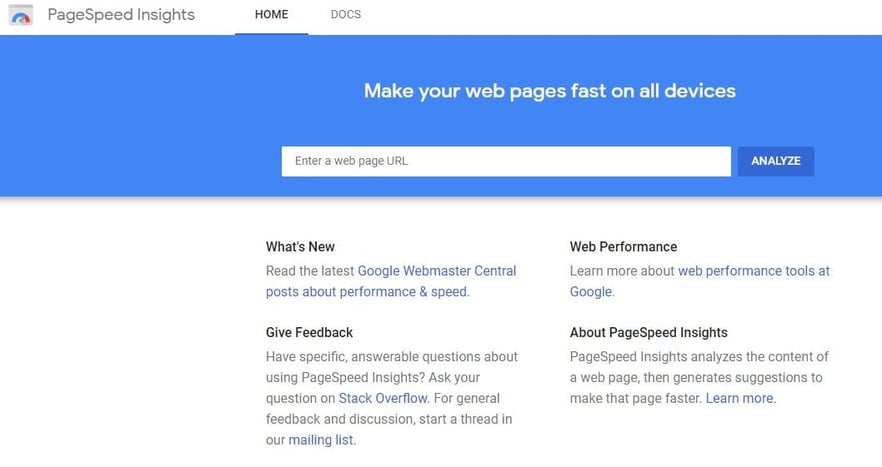
Website speed has been a ranking factor for some time on desktop, as Google first announced that they would be looking for site speed in their search ranking algorithms back in April 2010.
Google then took this to another level in July 2018, when they announced the 'Speed Update,' where page speed was now a ranking factor for mobile searches.
If you have never checked your website's speed, you can easily do this with Google's Page Speed Insights free tool, which basically analyzes the content of a web page, then generates suggestions to make that page faster.
Below is a list of the ways that HubSpot ensures your website pages are loading fast:
- Cloudflare: This ensures HubSpot websites load quickly using smart routing technology, so regardless of where visitors are coming from they get the best, fastest experience possible.
- Automatic Image Compression and Optimization: As the CMS renders a page, HubSpot automatically resizes images for you. In addition, if your images are hosted in the HubSpot file manager, they append width and/or height path segments to the image's URL. If the URL has a height or width parameter, the CMS intercepts that request and attempts to resize it to the requested dimension.
- Minified Javascript: HubSpot will automatically remove any unnecessary spaces, line breaks, and comments from your Design Manager JavaScript files to ensure the quickest delivery and parsing of your JavaScript files.
- Combined CSS Files: HubSpot automatically minifies and combines all of the included CSS files on a single page into one CSS file. This results in minimal HTTP requests and the speediest delivery and parsing of CSS on your website.
- HTTP/2: This is a replacement for how HTTP is expressed “on the wire.” The focus of the protocol is on performance; specifically, end-user perceived latency, network, and server resource usage. All SSL traffic on HubSpot-hosted websites is served using HTTP/2.
- Page Caching: HubSpot automatically caches pages and files on both the server and browser level to ensure the speediest delivery of all page assets to your website visitors. When your page or any dependency of your page (such as a template or module) changes, we automatically expire the server caches for that page. Server caching is especially effective for mobile website visitors and visitors outside the US where network latency is higher.
Security
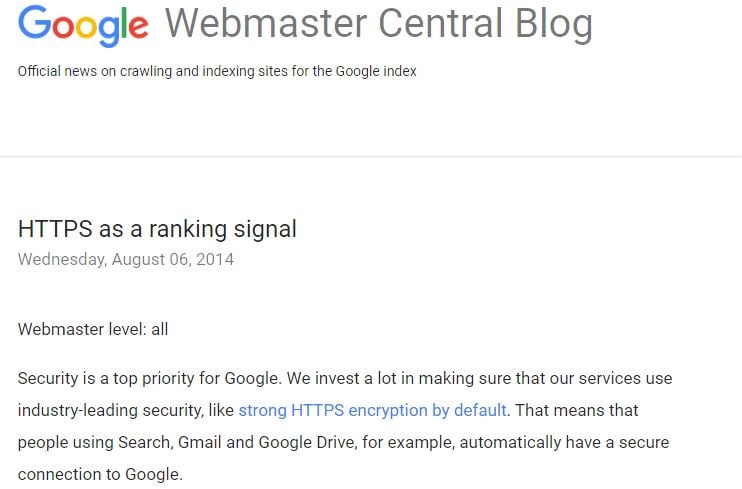
SSL certificates (also known as HTTPS) are a secure encryption allowing your website to send information with the added safety of it not being hacked.
Back in 2014, Google announced that security is a ranking signal, as it was already critical for websites that accept online payments and for anyone storing sensitive information, like medical facilities.
This trend continued for a few years with updates that Google rolled out:
January 2017
- HTTP pages will be marked with "Not Secure" in the URL bar if:
- The page contains a password field
- The user interacts with a credit card field
October 2017
-
HTTP pages will be marked with "Not Secure" in the URL bar if:
- The user is browsing in in Chrome incognito mode
- The page contains a password field
- The user interacts with input field
July 2018
- All HTTP pages are now marked as "Not Secure"
September 2018
- In this phase, secure pages will be marked more neutral instead of affirmatively secure
October 2018
- In this phase, HTTP pages will be marked as affirmatively "Not Secure" using red color and the non-secure icon in the URL bar if the user interacts with any input field
However, in May 2023, Google’s John Mueller shattered the notion that an SSL certificate would enhance a website's SEO, making it clear that an SSL certificate does not have any impact on your SEO rankings.
In a recent exchange on Mastodon, a user "EncryptedFence" posted:
Boost your website’s SEO and reputation with a must-have security measure: SSL Certificate – https://certerassl.com/blog/ssl-a-must-have-security-measure-for-websites-seo
Don’t miss out on the benefits! Get an SSL certificate today and keep your website safe.
Google Senior Search Analyst/Search Relations Lead, John Mueller, responded:
@EncryptedFence this does not “Boost your website’s SEO”, sorry.
Why the change of heart? Since 2014, SSL certificates have become commonplace for websites. In other words, it's hardly a distinguishing factor in the SEO rat race.
Other factors, like backlinks, still allow for a bell curve among websites, and would be considered a strong ranking signal.
The verdict: HubSpot's built in SSL certificate is still highly beneficial for protecting your website and keeping valuable traffic. However, it no longer boosts your SEO ranking.
So what does all this mean for users of the HubSpot CMS? Well....
You not only get an SSL certificate to ensure your website is secure and safe, but they include the impressive list of security features below.
- A Global Delivery of Content: At HubSpot, your website and all of its content is served through our global content delivery network (CDN). This allows them to handle high levels of traffic— ensuring your site remains active during an influx of traffic. Datacenters around the globe host your content. If one datacenter goes down, traffic automatically is rerouted to the next closest center so you, and your visitors, don't experience any downtime.
- Web Application Firewall: Hubspot employs Cloudflare’s enterprise-class web application firewall, to detect any potential attacks before they pose a threat to your site. Malicious IP addresses are detected and blocked before they can get into your website.
- SSL Included: At HubSpot, every site hosted on our CMS is automatically provisioned with a standard SSL certificate. SSL creates greater trust between your brand and visitors to your site, and increases your ranking within Google search results.
- HSTS Max Age Directives: HubSpot offers government level security through HSTS max age directories. With a our standard SSL certificate, you can create a 301 redirect to ensure your site is loaded at the secure domain. With HSTS, you can remove the ability for users to click through certificate-related warnings, ensuring that visitors always reach an SSL enabled site with HSTS headers enabled.
- Continuous Updates & Sophisticated Anomaly Detection: HubSpot monitors their network for anything out of place, allowing them to quickly identify and mitigate new attack types. They also go through the process of updating their products thousands of times per day, ensuring that you never need to worry about updating your CMS.
- Dedicated Security Team: HubSpot has an entire team of individuals dedicated to ensuring the security of your content online. Through both automated and manual checks, they monitor the CMS 24/7 for attacks, potential abuse, or other anomalies.
Manage Your SEO Meta Tags

Like we mentioned in our previous blog, ' HubSpot SEO Tips That Will Get You Found Online', meta tags are used to describe the content on your website and make it more accessible for search engines. HubSpot makes it SUPER easy to manage and edit the meta description of all your blog posts, landing pages, and website pages.
Your Site's Content, Technique and Styling is Separated Out
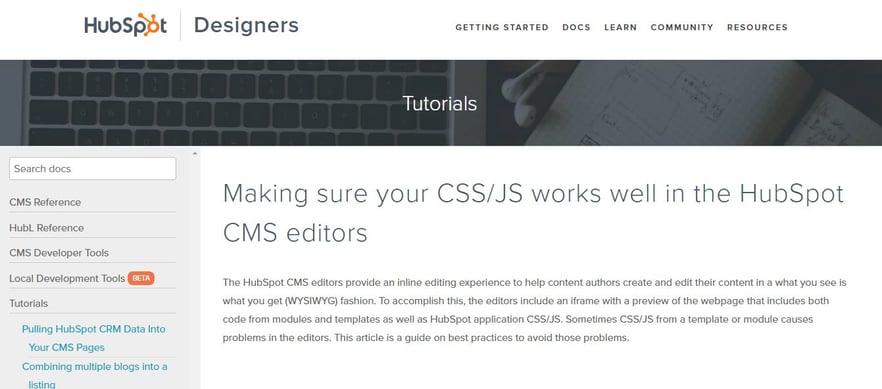
HubSpot CMS separates your Javascript from your CSS to keep your site structure clean. It also uses HTML5 instead of Adobe Flash so your content is secure, supported across browsers, and optimized for mobile.
An Editable Robots.txt File

The robots.txt file is a text file that is located in the root of the domain folder. It tells search engines which pages and folders should not be indexed, such as login pages. HubSpot lets you easily manage your robots.txt file -- giving you full control over the content that is crawlable by search engines.
Duplicate Content is Avoided
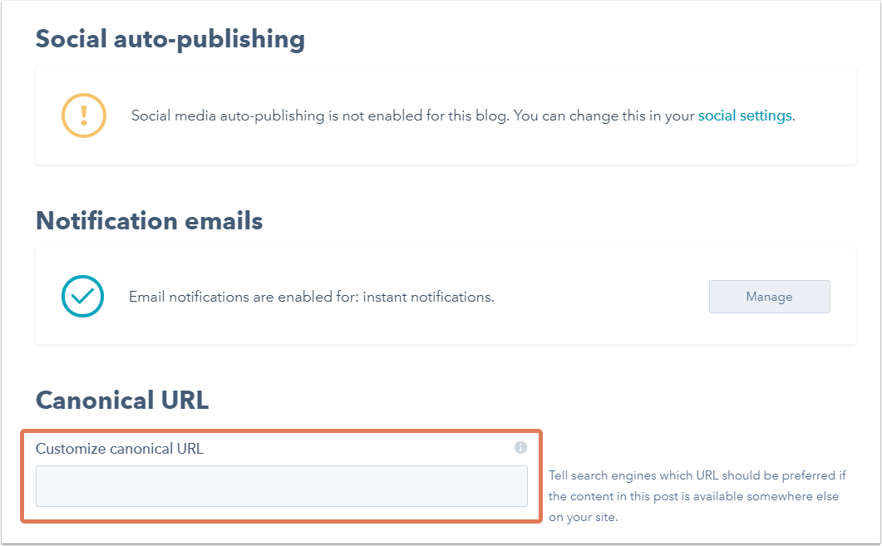
Duplicate content occurs when the the same content is accessible via multiple URLs. This happens often with syndicated content or affiliate websites. Having duplicate content on your site will impact your ranking within search engine results. To help you manage duplicate content, HubSpot CMS lets you edit the canonical URL tag of any page.
HubSpot CMS Generates a Dynamic XML Sitemap
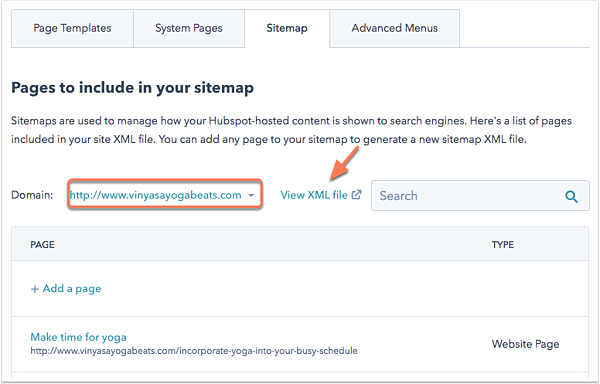
Sitemaps are used by search engines to find all the pages on a website. Websites with a lot of pages, like ecommerce sites or online newspapers, greatly benefit from this feature. Hubspot CMS creates separate sitemaps for different types of content, ensuring that your site structure remains organized. Your sitemap is also automatically updated as you publish new content, ensuring that you never have an outdated sitemap.
Templates Speed Up Creation & SEO Optimization
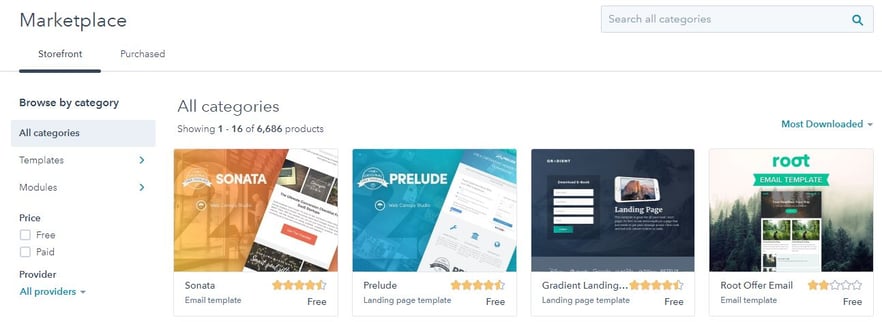
The HubSpot CMS operates on templates that make it easy to create content that is optimized for search. These templates are optimized for SEO and caching, ensuring that your newly created content is positioned to perform well on search.
Set Meta Tags for Specific Languages
If you operate in multiple languages, you should separate your in-language content as much as possible. HubSpot CMS makes it easy to organize your content into language specific folders, and publish translated content on separate websites with language specific URLs.
Automatic 301 Redirects
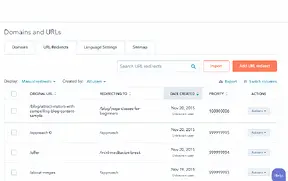
Every time you change a URL, you need to update that link to ensure your site visitors don’t see a bunch of 404 errors -- leading to a loss in authority and a poor user experience. Doing this manually across your entire site can be laborious and time consuming. That’s why HubSpot CMS will automatically setup a 301 redirect for any URL that was changed, ensuring that any instances of the old URL lead to the live page. Setting up these redirects on obsolete pages will also help maintain the authority you’ve gained overtime through backlinking to other sites.
Conclusion
To sum up, having a comprehensive SEO strategy is essential for the success of your website. In this post we've emphasized the significance of technical SEO in improving your website's performance and boosting your rankings on Google.
With HubSpot CMS's built-in technical SEO features, including website speed optimization, security measures, and efficient content management, you have the opportunity to enhance your website's visibility and provide a better user experience. By utilizing these powerful tools, you can attract more leads and ultimately expand your business.
To discover more about HubSpot SEO and its benefits for your website, stay tuned for future posts!




